|
Mithila Brahmans
Mithila Casts
Vidyapati
Maithili
Language
Mithila is a region of festivals. In
fact, the maithils are said to observe more festivals than there are
days in the year. Hardly a day passes without some festivities,
ceremonial observances or pilgrimages occurring in country so as its
region in Mithila. The following is a brief description of the major
festivals observed in the Mithila.
Navabarsha (mid-April)
Nawa Varsa or Maithils (Mithila) new year is celebrated every year
with great enthusiasm. This great according to the officially
recognized Vikrama Era fall on the first day of the first month the
Maithils year (Baishakh) Which corresponds to mid April around. As
elsewhere, the New Year is observed by exchange of greetings,
singing and dancing.
For the people in Mithila however it is more then this. They
celebrate this occasion as beginning of hot days by putting cold
water in head by elders, and then playing with water.
Nag Panchami (July/August)
(fifth day after the full moon of Shrawan)
In Hinduism, Nag (the divine serpent) is glorified as the provider
of rain. Nag is worshipped to provide a good harvest during the
monsoon season, and Nag Panchami, the fifth day of the bright lunar
fortnight, is set aside for worshipping serpents. Devotees on this
day paste pictures of Nag over their doorways with cow-dung. As part
of the rituals to propitiate the divine serpents, milk, their
favorite drink is offered to the pictures. Failure to appease them
may invite droughts and disaster in the days ahead.
Devotees also teats sour food at early morning.
Janau Purnima, Rishi Tarpani (July/August)
(one day preceding the full moon of Shrawan)
On this day, Brahmins (The priestly class) and Rajput have their
annual ritual of changing their sacred thread called the janau. This
is also the day for Raksya Bandhan (a safety thread bon). Most
prefer their Brahmin priests to put it around their wrists with the
chanting of mantra (holy hymns).
Rishi Tarpani is the day to pay ablution to Rishis, as the hermits
practicing self-denial are known. The full moon day thus sees hordes
of Hindu priests with their clean-shaven heads taking dips in the
holy water to purify their bodies before they get on with their
business of offering sacred yellow threads to their clients.
Krishna Ashthami (August)
(seven days after the full moon of Bhadra)
The birth anniversary of Lord Krishna, the eighth incarnation of
Lord Vishnu, is one of the greatest Hindu festivals for the Hindus
of Mithila. Krishna’s exploits as a child when he subdued fierce
demons and performed miraculous feats specially endear him to his
devotees. In his boyhood, Krishna killed the evil king Kansa, his
maternal uncle, to liberate the people from his atrocities. During
the 18-day war depicted in the great Hindu epic Mahabharat, Krishna
served as the de facto commander and strategist for the righteous
Pandavas.
Teej (August/September)
(2nd till the 5th day following the new moon of Bhadra)
A blissful conjugal life, progress and prosperity for her husband,
good fortune for herself, and purification of her own body and soul:
these are what an ideal Hindu woman is supposed to aspire for. Teej,
the lively festival exclusively for womenfolk, is a spiritual
endeavor towards the realization of their aspirations. For an
unmarried women, compliance with the age-old tradition ensures a
good, loving and caring husband.
The festival combines both sumptuous feasts and tormenting fasts. On
the first day of the three-day celebration, groups of women, both
married and unmarried, congregate at one place in their finest
attires. Amidst laughter, songs and music, the grand feasts begins.
The merry making goes on till midnight, from which time onwards the
women undergo a 24-hour fast.
The next day sees these women, in their crimson saris, singing and
dancing on the streets leading to Shiva shrines. The main activities
revolve around the Pashupatinath temple in Kathmandu. On this
special day, the temple remains closed for all males, except the
Brahmin priests. Female devotees, as a mark of total devotion to
Shiva the Destroyer, circumambulate the lingam, the phallic symbol
of the Almighty, making offerings of flowers, sweets and coins, and
praying for their husband’s longevity, progress and prosperity.
The third and last day of the festival is called Rishi Panchami,
which is the fifth day of the waxing moon. On this day, women who
have undergone the agonizing fast pay homage to various deities
situated on the banks of sacred rivers. After a holy bath in the
rivers, they use a piece of datiwan (a sacred plant with religious
and medicinal significance), to sprinkle holy water all over their
body 360 times. The ritual helps them secure exoneration for all
sins they might have committed in the past year.
Chaurchan (September)
Its mean the fourth day moon of August cosidered as a day sacred to
Ganesha, The elephant headed god of good luck. People celebrate this
day offering various seasonal fruits and flowers to all powerful
Ganesha and pray for protection from unnecessary evils.
Dasain (October)
Dasain glorifies the triumph of Good over Evil, of Goddess Durga’s
slaying of the terrible demon Mahisasura, who roamed the earth,
terrorizing the populace in the guise of a ferocious water buffalo.
Ten days of intense sacrificial and joyous worship celebrate
fertility and the victory of good over evil, as represented by the
goddess Durga Bhawani and the various gods who battle the demons.
The first day of Dasain is
called Ghatasthapana, which means establishing of the holy water
vessel which represents the Goddess Durga. Barley seeds are planted
in it.
The seventh day or Phulpati is
the offering of flowers and leaves, carried by runners from Gorkha,
the ancestral home of the Shah Kings of Mithila, and received by the
King in Kathmandu.
On Maha Ashthami, the eighth
day, the fervor of worship and sacrifice to Kali and Durga
increases. Animal sacrifices highlight events of the ninth night to
appease Durga, the Goddess of Victory and Might. As animal
sacrifices is not practice by many they replace animals by
vegetables.
Dasain takes its name from Vijaya Dashami, the Great Tenth Day of
Victory. This is the day when Lord Rama slew the demon Ravana and
when Durga vanquished the demon Mahisasura. On this day tika is
received from brahmins. The tika symbolizing victory is a blessing
of good fortune.
Deepawali & Lakshmi Puja (November)
Tihar is known as the festival of lights and is celebrated for five
days. On the occasion of Laxmi Puja houses are illuminated at night.
An assortment of special sweets are prepared and offered to guests.
At this time certain animals are also favored with food and
garlands. The first day of Tihar is dedicated to the crow, the
second to the dog, the third to the cow and the fourth to the ox. On
the fifth day, women who have brothers offer them tika and special
food. In return the brother gives his sister a token of appreciation
usually in the form of money and renews his commitment to protect
her honor.
Chhath Parva (November)
There is one Hindu festival that is that is known for its unique
association to Mithila. It is devoted to the worship of the Sun God.
It is, therefore, also known as Surya Shashti. The festival begins
on the sixth day of the month of Kartik in the Hindu lunar calendar.
This corresponds to the period beginning from late October to mid
November, depending upon the year. It is one of the holiest
festivals for Mithila and extends four days long. Details of each
day are elaborately given are here :
There is one Hindu festival that is known for its unique association
to Mithila. It is devoted to the worship of the Sun God. It is,
therefore, also known as Surya Shashti. The festival begins on the
sixth day of the month of Kartik in the Hindu lunar calendar. This
corresponds to the period beginning from late October to mid
November, depending upon the year. It is one of the holiest
festivals for mithila and extends four days long.
Day 1
Devotees take a cleansing dip - preferably in the holy river, lake
or water tank ( Ganges )- and bring water to prepare the offerings.
Day 2
A fast is observed for the whole day and in late evening, the
devotees, after performing a worship at home, break their fast. The
offerings - typically a porridge of rice, puris (deep fried puffs of
wheat flour) and bananas - are shared among family and visiting
friends and relatives.
Day 3
It is spent in the preparation of offerings at home during the day.
In the evening the devotees move to a river bank (or a pond, lake)
with the entire family and friends. There the offerings are made to
the setting sun. At nightfall, the devotees along with the family
and friends return home where another colorful celebration takes
place. Under a canopy of sugar cane sticks, clay elephants
containing earthen lamps, and containers full of the offerings, are
placed. There the fire god is worshipped. Devotees maintain a strict
fast without even water.
Day 4
A procession similar to that conducted on the third day is
continued. Devotees, family and friends, move again to the river
bank. Offerings are made to the rising sun. At the completion of the
offerings, there is great celebration. The devotees break their fast
and the rich offerings are made available to the family, friends,
relatives and the onlookers! The offerings are also very
characteristic. They are: a deep fried and sweet rolls of stone
ground wheat flour, grapefruit, whole coconuts, bananas, and grains
of lentils. These items are contained in small, somewhat
semicircular, pans woven out of bamboo strips. Chhath is a very
colorful festival. New clothes are a must for the devotees. And the
family also are dressed in their finest on the visit to the river.
There is much music and a lot of singing of folk songs, both at home
and on the river bank. There is much gaiety even among so much
piety. This day brings an end to the four day festival that is
indeed a great fiesta for a part of mithila
Sita Vivaha Panchami (December)
(the 5th day following the new moon of Ashwin)
This festival, commemorating the marriage of Sita to Ram. Ram, hero
of the epic Ramayana and an incarnation of Vishnu had come to
Janakpur, was the kingdom of Sita’s father King Janak, to marry Sita.
The occasion attracts thousands of pilgrims from India.
Maghe Sankranti or Tila Sankranti (Mid January)
(first day of the month of Magh)
Maghé Sankranti is the first day of the month of Magh. Magh is a
sacred month so the first day is celebrated with a feast at home
that particularly constitute of til and brown sugar. Lord Vishnu the
Preserver is worshipped and thanked for the return of the warm
season once more. Through the month of Magh, people busy themselves
with religious activities such as taking an early morning bath in
holy rivers, visiting the shrines of Vishnu and offering flowers,
incense and food, and reading the Bhagavad Gita.
Basanta Panchami & Saraswati Puja (February)
(five days after the new moon of Magh)
Both festivals occur on the same day. This is the day that ushers in
the spring season. Basanta Panchami is celebrated as beginning of
autumn season. In Saraswati puja day goddess of knowledge is
worshipped. Many students fast on this day and eat only one meal of
pure vegetarian dishes to prove their devotion.
Maha Shivaratri (February)
(new moon day of Falgun)
Maha Shivaratri, or the Great Night of Lord Shiva, is observed in
honor of Lord Shiva’s day of birth. A great fair takes place at the
Pashupatinath Temple as thousands of pilgrims from all parts of
Mithila and India congregate in celebration.
Holi or Fagu-wa (March)
(full moon day of Falgun)
This is a colorful occasion when people smear each other with
colored powder and splash water balloons onto one another and youths
love to play. This continues for one full week. The fever of this
game goes very high on the full moon day which is the last day of
celebration. In this day people exchange greeting as offer various
sweets.
Ramnawami (March)
Ramnawami a big day for Hindu is celebrated in honor of the great
Hindu King Rama on the 9th day of bright fortnight of chaitra
(March). But the main deity to be worshipped on this occasion is the
all powerful mother goddess Durga, the wife of Lord Shiva, the
presiding deity of the Hindu pantheon because as and the holy Hindu
scriptures say Rama was a great devotee of Durga her blessings
enabled Rama to kill his arch enemy, Ravana, the most dreaded demon
king on this day. This day is symbolically commemorated as the
victory of virtue over vice.
Sama-Chakeva
It is during the winter season that the birds from the Himalayas
migrate towards the plains. With the advent of these colorful birds,
celebration of sama–chakeva is done. This is a festival especially
celebrated in mithila. mithilanchal dedicates this festival to the
celebration of the brother sister relationship. It represents the
tradition of this land as well as the art of making idols. This
festival starts with the welcoming of the pair of birds sama-chakeva.
Girls make clay idols of various birds and decorate them in their
own traditional ways. Various rituals are performed and the festival
joyfully ended with the ‘vidai’ of sama and with a wish that these
birds return to this land the next year.
Ramnavami
A Hindu festival celebrated in all parts of the country. This is the
auspicious day when lord RAMA was born. People celebrate it
observing fasts and offering prayers in his honour.
Makar-Sankranti
Also known as Tila Sankranti, the festival marks the beginning of
the summer season. People believe that from this day on, the days
become longer and the heat of the sun also increases. Every year it
is observed on the 14th of January. People celebrate it by giving
offerings to the poor.
Bihula
Bihula is a prominent festival of eastern Bihar especially famous in
Bhagalpur district. There are many myths related to this festival.
People pray to goddess Mansa for the welfare of their family.
Madhushravani
This festival is celebrated all over mithilanchal with much
enthusiasm. It is celebrated in the month of Sawan (Hindu calendar),
which falls around August. This festival carries a message with
itself. It teaches how to weave together religion and tradition in
day-to-day life.
|
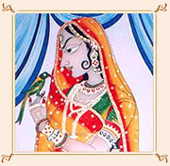
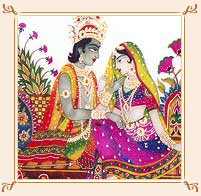
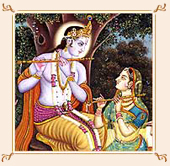
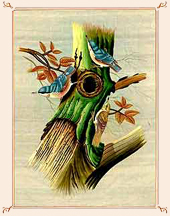
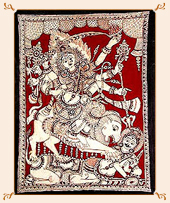
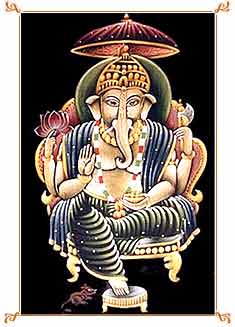
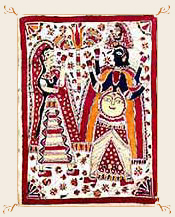
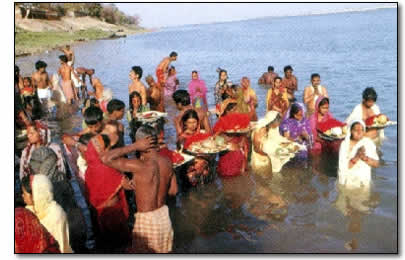

|
